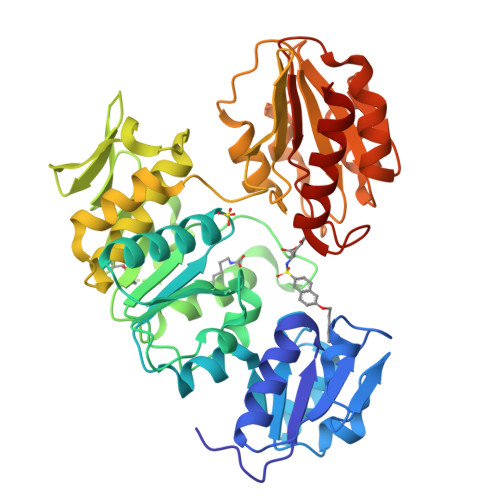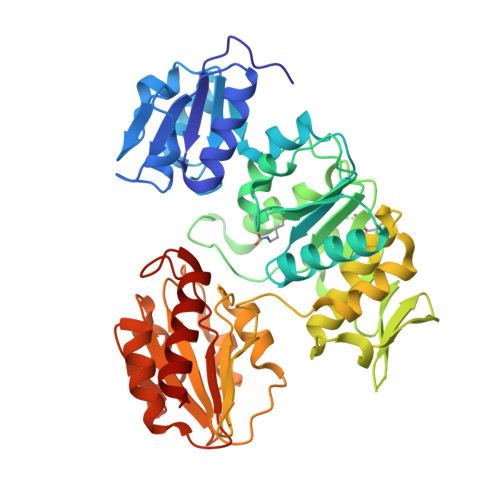Novel naphthalene-N-sulfonyl-D-glutamic acid derivatives as inhibitors of MurD, a key peptidoglycan biosynthesis enzyme.
Humljan, J., Kotnik, M., Contreras-Martel, C., Blanot, D., Urleb, U., Dessen, A., Solmajer, T., Gobec, S.(2008) J Med Chem 51: 7486-7494
- PubMed: 19007109
- DOI: https://doi.org/10.1021/jm800762u
- Primary Citation of Related Structures:
2UUO, 2UUP, 2VTD, 2VTE - PubMed Abstract:
Mur ligases have essential roles in the biosynthesis of peptidoglycan, and they represent attractive targets for the design of novel antibacterials. MurD (UDP-N-acetylmuramoyl-L-alanine:D-glutamate ligase) is the second enzyme in the series of Mur ligases, and it catalyzes the addition of D-glutamic acid (D-Glu) to the cytoplasmic intermediate UDP-N-acetylmuramoyl-L-alanine (UMA). Because of the high binding affinity of D-Glu toward MurD, we synthesized and biochemically evaluated a series of N-substituted D-Glu derivatives as potential inhibitors of MurD from E. coli, which allowed us to explore the structure-activity relationships.The substituted naphthalene-N-sulfonyl-D-Glu inhibitors, which were synthesized as potential transition state analogues, displayed IC50 values ranging from 80 to 600 microM. In addition, the high-resolution crystal structures of MurD in complex with four novel inhibitors revealed details of the binding mode of the inhibitors within the active site of MurD. Structure-activity relationships and cocrystal structures constitute an excellent starting point for further development of novel MurD inhibitors of this structural class.
Organizational Affiliation:
Drug Discovery, Lek Pharmaceuticals d.d., Verovskova 57, 1526 Ljubljana, Slovenia.





















